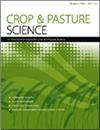欧洲和法国的数字农业:哪些组织可以提高采用率?
IF 1.9
4区 农林科学
Q2 AGRICULTURE, MULTIDISCIPLINARY
引用次数: 2
摘要
摘要本文介绍了欧洲和法国农业部门数字化转型的实施方式。它描述了欧洲和国家的主要战略、研究和创新举措的结构,以及促进创新、采用和使用的能力建设投资。更具体地说,介绍了法国关于数字农业的研究和创新生态系统。参与者来自不同的组织,如研究和高等教育机构、政府机构、农业技术公司、农民工会等,并通过协会(如Robagri)、网络(如RMT Naexus、DigiFermes、Fermes Leader)或生活实验室(如Occitanum)在数字技术评估和联合设计方面开展合作。此外,还致力于能力建设(如Le Mas numérique、Mobilab)和更好地了解采用和使用数字技术的驱动因素(如FrOCDA)。在这些不同的组织中,数字农业融合实验室#DigitAg的成立是为了促进数字农业的跨学科研究。所有这些举措旨在利用数字技术支持欧洲绿色协议、从农场到餐桌和生物多样性战略,以及法国为实现更安全、更可持续的粮食系统而采取的更多农业生态做法。尽管这一组织生态系统发展迅速,但鼓励数字化和绿色转型共同进化的目标并非没有挑战,无论是通过新的研究、创新、举措还是参与者之间的合作,都需要克服这些挑战。本文章由计算机程序翻译,如有差异,请以英文原文为准。
Digital agriculture in Europe and in France: which organisations can boost adoption levels?
ABSTRACT This paper presents the way the digital transformation of the agricultural sector is implemented in Europe and in France. It describes the main European and national strategies, the structure of research and innovation initiatives, and the investment in capacity building to foster innovation, adoption and use. More specifically, the French research and innovation ecosystem on digital agriculture is described. The actors involved come from different organisations, such as research and higher educational institutes, government agencies, agricultural technology (AgTech) companies, farmer unions etc., and work together by means of associations (e.g. Robagri), networks (e.g. RMT Naexus, DigiFermes, Fermes Leader), or living labs (e.g. Occitanum) on both digital technology assessment and co-design. Additionally, support is devoted to capacity building (e.g. Le Mas numérique, Mobilab) and a better understanding of the drivers of adoption and use of digital technologies (e.g. FrOCDA). Among these various organisations, #DigitAg, the Digital Agriculture Convergence Lab, has been created to foster interdisciplinary research on digital agriculture. All these initiatives aim to use digital technologies to support the European Green Deal, Farm-to-Fork and Biodiversity strategies as well as the French orientation towards more agroecological practices for safer and more sustainable food systems. Even though this organisational ecosystem is developing fast, the objective of encouraging the coevolution of both digital and green transformations is not without challenges that still need to be overcome, either through new research, innovations, initiatives or collaborations between the actors involved.
求助全文
通过发布文献求助,成功后即可免费获取论文全文。
去求助
来源期刊

Crop & Pasture Science
AGRICULTURE, MULTIDISCIPLINARY-
CiteScore
4.20
自引率
15.80%
发文量
111
审稿时长
3 months
期刊介绍:
Crop and Pasture Science (formerly known as Australian Journal of Agricultural Research) is an international journal publishing outcomes of strategic research in crop and pasture sciences and the sustainability of farming systems. The primary focus is broad-scale cereals, grain legumes, oilseeds and pastures. Articles are encouraged that advance understanding in plant-based agricultural systems through the use of well-defined and original aims designed to test a hypothesis, innovative and rigorous experimental design, and strong interpretation. The journal embraces experimental approaches from molecular level to whole systems, and the research must present novel findings and progress the science of agriculture.
Crop and Pasture Science is read by agricultural scientists and plant biologists, industry, administrators, policy-makers, and others with an interest in the challenges and opportunities facing world agricultural production.
Crop and Pasture Science is published with the endorsement of the Commonwealth Scientific and Industrial Research Organisation (CSIRO) and the Australian Academy of Science.
 求助内容:
求助内容: 应助结果提醒方式:
应助结果提醒方式:


